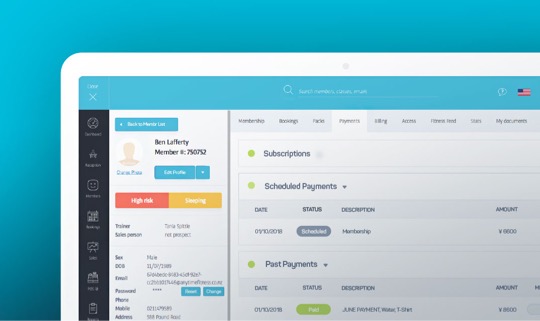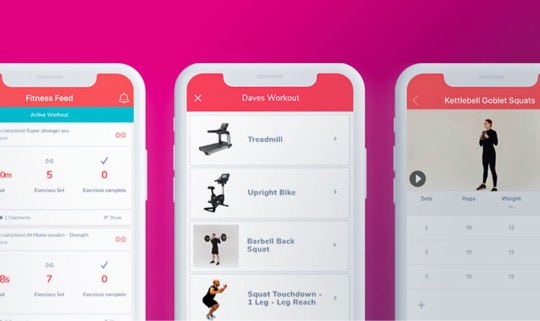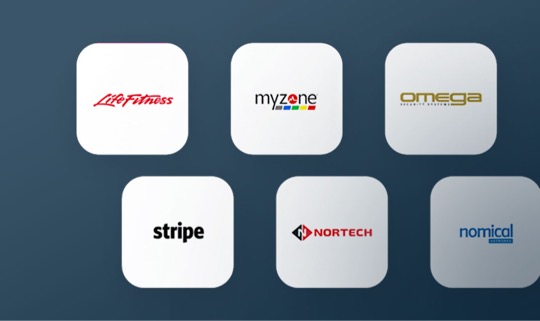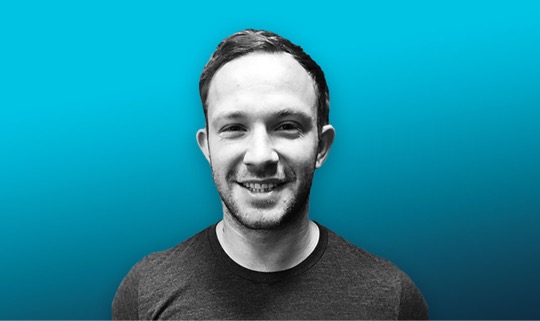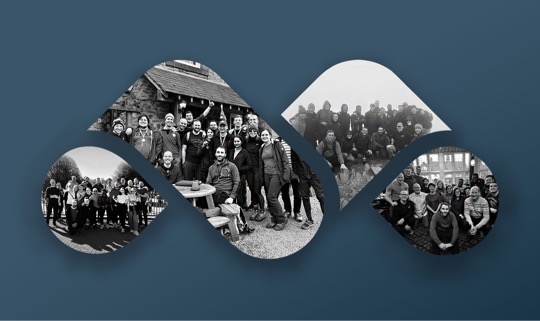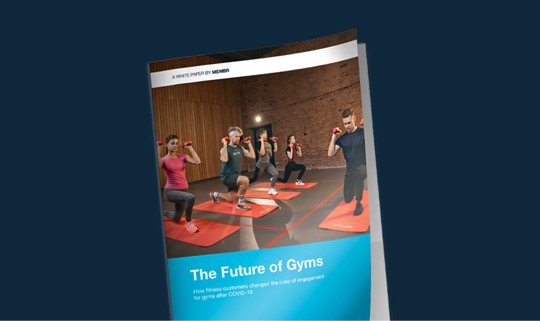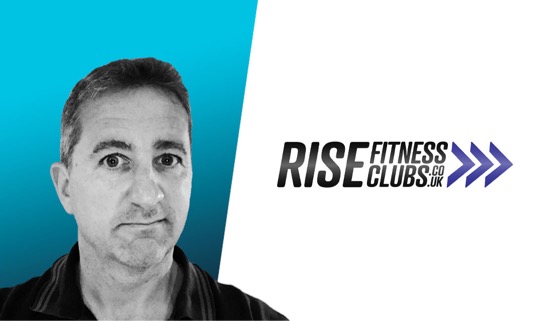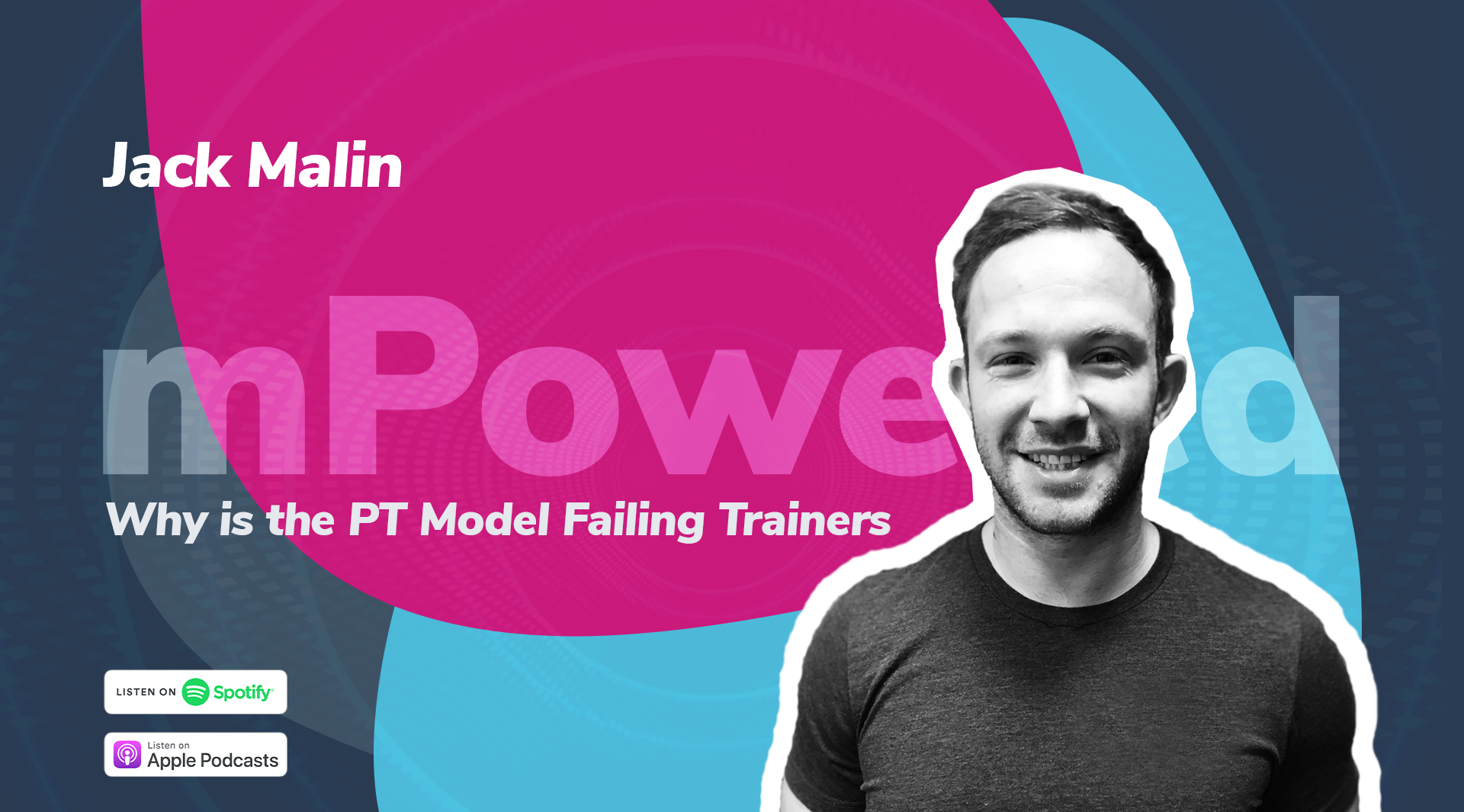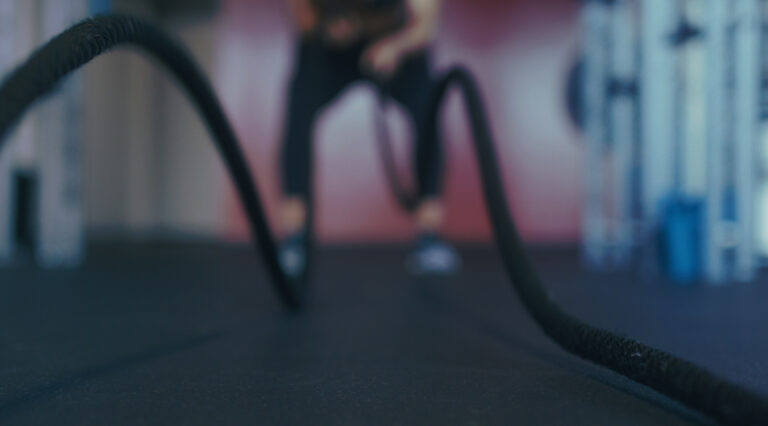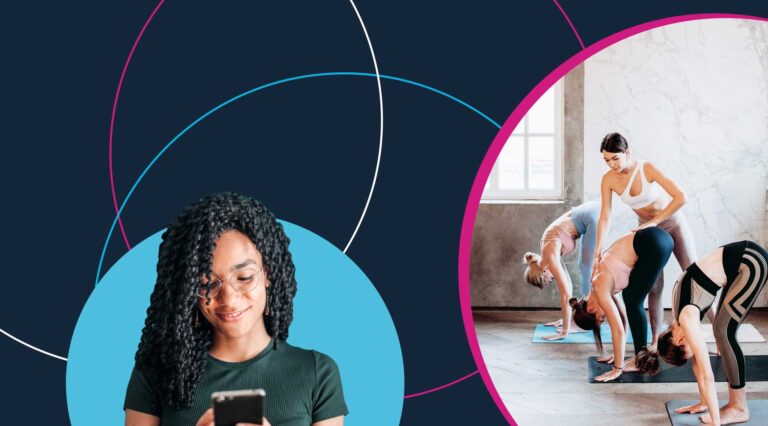“It’s absolutely nuts that 90% of people in clubs don’t get the support from a professional. We’ve got to have more tools at our disposal as trainers than just 1 to 1 PT. “
Welcome to the second series of mPowered! We are dedicating the next couple of episodes exclusively on The Future of Personal Training, starting with what the current PT model looks like.
From PT to a global fitness business owner, Jack Malin — Founder and CEO of Membr — knows digital is here to stay, whether the fitness industry is ready to catch up or not. In this episode, Jack looks back to his PT days, why the self-employed PT model is set up to fail trainers and how fitness clubs can help.
Listen to the full episode now:
Join our next episode where Craig & Jack will co-host and welcome Aaron McCulloch and James Lorey from YOUR Personal Training UK!
Discover more mPowered episodes on Spotify or Apple Podcasts, click on the icons below to browse and subscribe.
Craig McNeill 0:01
So welcome to mPowered. And my name is Craig McNeill. And today I’ve got a host called Jack Malin. Jack Malin is the CEO of Membr, a co-founder. How are you, Jack?
Jack Malin 0:15
Yeah, good thanks, Craig, good to er, good to join you on mPowered today.
Craig McNeill 0:18
Awesome. Great to have you. So we want to find out a little bit more about your background Jack, and how you got to where you where you are today?
Jack Malin 0:26
Yeah, I mean, it’s like, like you said, CEO and founder of Membr, erm the software company that we that we both know, and background, I guess as to how I’ve got into the role that I do at Membr, and I guess how we founded Membr. And originally I was trying, trying to get into professional rugby was never quite good enough. So when I went to university, and played student rugby, which was a slightly less intense, but considerably more fun, and then fell very quickly into health and fitness and started working as a personal trainer working in strength and conditioning. And reached a point where personal trainers reach where you, or hopefully we do, where you you, you run out of hours in a day, you’re exchanging your time for money and therefore can’t take any more clients on. So had an, had an idea for my business that I could sell, essentially, charge people aren’t online for training plans for meal plans, help them get fit without having to stand next to them. And that got introduced to Dave, our Chief Product officer now and at the time, a friend of a friend and he said, Yeah, I could build that for you. And off we go. And it was meant to be a six week project that started in 2010. And it’s still going so it quite quickly evolved from being a product for me to Dave saying why don’t we do this together and start selling it to other trainers and then evolved from there into a into a fitness product for health clubs, and then eventually into a full gym management solution. And fast forward 10 years where we’re in 23 countries, and 50 members of staff supporting everything from individ-, independent operators to some of the world’s largest health clubs. So yeah, been a been a crazy ride, but very much see myself as a health and fitness professional that went from personal training to software, not not someone that’s got a big software background or background in engineering or anything like that is we’re very much a health and fitness company that sells software, not not the other way around. And that’s how we like to position ourselves.
Craig McNeill 2:13
What a story! Do you remember when we first met where we met?
Jack Malin 2:18
I remember Graham Hind introduced us. But I can’t remember where it was, where was it?
Craig McNeill 2:22
So it was the-
Jack Malin 2:23
Is this PC!? It could be some dodgy bar in Manchester?
Craig McNeill 2:26
M62 Starbucks (laughs)
Jack Malin 2:30
That that is where the magic happens, isn’t it?
Craig McNeill 2:33
That was back in 2011 wasn’t it in terms of where where we met? And it was erm,
Jack Malin 2:38
You were in PT education weren’t you?
Craig McNeill 2:40
Yeah. So I was coming out of PT and going into education and kind of either manager and leader in terms of erm, with Your PT at the time. I was er, I met you in 2011, 2012?
Jack Malin 2:52
Yep.
Craig McNeill 2:53
At that point, that kind of, the PT platform was the, was the main driver at that stage, wasn’t it?
Jack Malin 2:59
Absolutely. I think. And that’s exactly, we both, both got to similar points where you get to the point where you, where you run out of time in the day and you try to try to grow and evolve your business. And I went into technology, you in education, and we, and we met at your PT and we’re, and that, and that was exactly what we were trying to do trying to work with PTs to sign them up for 10, 20 quid a month and and help them train their clients. But ultimately, ultimately, that product flopped because PTs, very few people, not very few, the majority of PTs didn’t have that problem. The majority of PTs had plenty of time, they didn’t have any clients. And that product was aimed at helping PTs that have run out of time, and had too many clients. And unfortunately, where PT was at that time and probably is now, that’s not the biggest problem that the PTs had. So it’s fair to say that product fell flat on its face, we then, then started to say look this conceptually, it makes sense. The business model didn’t make sense giving giving trainers a tool that allows them to scale their knowledge to more than just the forks and pull the tape PT is completely logical. That’s not the problem the trainer has we said right actually let’s start to use this product with the gym as the customer rather than the PT, and the PTs use it but the gym, the business model is built around the gym. And then yeah, got about 2012 2013 we had to make a call as to whether we integrated into all the management systems we could to have to be able to get access to the data to be able to provide that service, or we rebuilt what we had and released it as a full gym management solution so we could still have the fitness part of the core, but be able to sell it as a full gym management solution that could run their run their business, which whether it was a right or wrong decision we’ll, we’ll never know because had we have stuck true to it being a fitness product we’d have probably caught the wave of the digital fitness explosion, probably better than we did as a as a management system. But it’s also become our USP as a management system that we we’re a fitness product. It’s not just a utility, everyone accepts they’ve got a gas and electricity bill but no one likes paying it. And that’s what many people feel about that the gym software, we try to make sure that we don’t become a utility, it’s something that adds adds real value. So right or wrong decision at that, at that point when you’re running around country trying to trying to grow a business you look for for gaps in the market and we thought the gap in the market was, at the time, cloud-based gym management software and went down that path.
Craig McNeill 5:19
Awesome. sounds really good. So in terms of the next part of the intro is is our tradition at mPowered, you need to tell us an interesting story about yourself, Jack. Keep it clean.
Jack Malin 5:32
You were at my wedding, and I think if you’d have spoken to Fisher, my best man, he might have given you a very, very different story and gave some different stories that day. But an interesting fact that that me my mate once cycled from Paris to London for charity to raise money for another mate, they got injured playing rugby, which I guess on the face of it is probably not the most interesting thing. People do tha-, do sort of charity events reasonably frequently. I think the bit that was that was interesting was the ridiculous nature of how we did it. And we got to about a month before it and he phoned me to look I haven’t had any time to train for this. I said “Well neither have I”, Well, if we both don’t train, then we’ll be in the same boat. We were early 20s so we’re both reasonably fit. And as we agreed not to train which was the first stupid thing I then got into my car in Manchester got, drove down to my parents who were in Hertfordshire at the time, to leave my car there and get the get the train into London to get the Eurostar, got to, got to St Albans and realized that I’ve left one of my wheels leaning against the car in Manchester. But it probably gets worse I managed to get another wheel by the time we got to Paris realized my mate it turned up on a mountain bike. My bike rack didn’t fit on my bike. So we sat in this little little Parisian hotel thinking how the hell are we going to get back and before you know it we thought right we’ll set off leave all the stuff that we couldn’t carry. He had his mountain bike I should probably should have been the good mate and taken in turns on that but he was a bit fitter than me so I stayed on my road bike left him on the mountain bike and yeah, followed er, followed Google Maps all the way home because it’s- I don’t know if you’ve tried to read a map since you were at school doing orienteering but was was more difficult than than we thought so probably Google Maps all the way home and after a nice morning in Paris set off so got back in one piece, but was probably the worst plan stupidest thing that ever done.
Craig McNeill 7:25
You could change that story being a digital pioneer that you are obviously didn’t want to use paper maps.
Jack Malin 7:30
That’s exactly that is exactly speak to Leon Rudge, that’s exactly what I’d say. Tell him I’m a futurologist and didn’t want to, didn’t wanna use pen and paper
Craig McNeill 7:39
Oh mate, don’t know how you survived.
Jack Malin 7:41
Mate it was er, yeah, it was ludicrous. And we honest, ‘cos we didn’t have any food with us we thought we would have to stop everywhere. But on a Sunday going through rural Northern France. There wasn’t anywhere to stop and eventually found a little restaurant that was far too posh for me and my mate and our sweaty cycling gear. But the bloke like this bloke couldn’t speak a word of English apart from telling us that his son was a sort of championship level cyclist, so I think he took pity on us. Realized that steak haché is not a hamburger. So my my GCSE French lessons didn’t go down very well. It’s actually raw raw beef. And then, had some raw beef and chips and got back on the bikes. It was a Yeah, good fun I always remember.
Craig McNeill 8:21
Sounds like fun. Yeah, well different kind of fun anyway. So Jack, we’re actually going to be co-hosts in our new series. And we’re going to be talking about the future of personal training, which is a really, really key time right now, we want to kind of obviously, have a quick, quick chat between you and I from our backgrounds. And obviously, the last 10 years, especially from, from your knowledge and on what you can share to our listeners. In terms of setting the scene for the series, we’re going to get lots of different guests on and we’re going to have really good conversations about different areas of personal training, so from educators to people who, who manage and lead hundreds of PTs. And then to club operators who oversee the PT within the accounts across the globe. And we’ll look at the UK as well. So in terms of what I wanted to kind of pick your brains out on the first episode today, Jack was kind of understand where we are today. And let’s start with with how does personal training currently work within the fitness industry? In your eyes?
Jack Malin 9:27
Yeah, I mean, I guess that’s a really broad question. I think if listen, our listeners will probably will probably have their own perspective on it. But I guess typically, you’re employed, you’re employed by the gym, you’re paid on delivery of the sessions you go for, you get the benefits of being a PAYE employee, and typically you get a basic salary and you’re commissioned, and then you’ve got the self employed model where you pay rent to work there. Bit like a hairdresser rents a chair, you pay a fixed fee and you then basically build your business from the clubs and there’s obviously different flavors of both of those, but I think most broadly speaking, the majority of models will fit into one of those either employed or self employed. And both comes with real positives and negatives, don’t they? And I think a lot of people, guests we’re gonna get on over the next few weeks that we’re gonna have people who’ve got experience of PT, from a self employed point of view and, and PT from an employee point of view, and probably a very, very different perspectives on it, I think, looking at the the employed version, sometimes it gets the stigma of it’s the PTs are like salesman, they’re just doing, they’re just delivering as many sessions as they can to get as much sales commission. And the problem is the self employed PT model is probably around the quality and the volume of trainers that you get on the floor on the gym floor. Something that I feel quite passionately, at the moment about which we are referencing that blog last last week is, is whether that is is sustainable moving forward so that there isn’t, there’s there are, I was going to say there isn’t a right or wrong way, but maybe there is right, but there’s, there’s positive and negative definitely, of both of those models. And like we said, both models have many flavors, you could be you could be employed on a flat rate, you could be employed on a very small wage with very high commission you might be employed, but just purely based on the number of sessions you deliver. And then you could be self employed in many, many ways as well.
Craig McNeill 11:11
Jack with your knowledge of being kind of having a global footprint with Membr over the last four or five years. What What is it like globally? Is it the same concept globally from a PT perspective? Or is it is there pockets of different kind of models out there?
Jack Malin 11:27
Yeah, I think there’s, you’ll you’ll always be able to find both of those in pretty much every territory that you that you go into, I think the UK has had a had a real sort of self employed prevalence over the last few years. And I guess that that comes with the take up of of the low cost sector which has really exploded here. And I think quite often those two things are aligned the the low cost sector relies on having self employed PTs around to keep staffing costs cost down. So we’ve seen an explosion of low cost clubs and and and also very high numbers of self employed PTs. If you look at the gyms that are doing employed PT, the chains of gyms are doing employed PT now Virgin Active, David Lloyd, I think Nuffield do fewer than then and also gets fewer in terms of the volume of gyms you look at those someone like PO gyms or self employed PT, they’re gonna have more gyms than three clubs combined. So we see a lot more of in the UK. Erm, in in Asia, there’s a lot there’s a lot of employed PTs still, pockets of Asia are still very much in its infancy. So they’re almost more of the kind of gym instructor level than the than PT. And we’re still seeing other gym instructors delivering traditional kind of, you know, kind of program reviews and what I guess where we were in that kind of sort of 10 15 years ago so that is a much more kind, it’s much earlier and it’s in its growth phase Asia and and the PT model’s probably in line with that.
Craig McNeill 12:52
Yeah, and that’s what’s interesting, isn’t it because it’s not right or wrong. It’s just whatever the market is, at that particular time and as you say, they’re kind of we’ve seen that and I think, I think it was around 2008 crash where a lot more self employed came because Gym’s had to scale back
Jack Malin 13:11
Definitely and then I guess quickly followed by the low cost sector taking taking a bit exploding really is probably a better way to put in the UK then you’ve got you’ve got the mid market chains, working about how we can compete on price and competing on price came with cutting costs and the gym instructor role almost has almost disappeared now really, bar maybe the local authority.
Craig McNeill 13:34
Yeah. So in terms of getting into the into the cracks there then, and so we know generally the two main models of personal training, what are the gaps there Jack in terms of what have you seen what have you What have you witnessed over over your time in terms of how does that affect the member’s experience how does that affect the gym’s vision whether it’s a key account or is it’s a single independent gym?
Jack Malin 13:58
Yeah I mean I guess it it comes down to what you what you really want from your PT model doesn’t it right and and if you’re running a low cost club and you’ve got only have to have two employees because actually your PTs cover your your gym classes your inductions your, absolutely everything. Maybe they would say well that’s phenomenal commercial decision to have that you look at someone like David Lloyd for example and Virgin where they’ve got high staff costs but they’ve got much more control over the service delivery within those clubs compared to somewhere but they’ve got self employed PTs. So there’s very few gap gaps in terms of across the two buckets as it weren’t being being self employed or employed. If you look at them separately, I think the issue you’ve got when with employed PTs is that the ceiling is is pretty low, I think is the lower risk option as a as a PT, you’re going to that with a with a basic salary. But even if you’re delivering 40 sessions a week there’s a there’s a reasonably low ceiling on what you can earn. The self employed business model from a PT’s perspective is a complete opposite, it’s, it really should be seen as setting up a business not not a job. But from from an operator’s perspective. If you look at the employed model, it comes with almost the reverse, right? It comes from more risk because you have to employ people with comes with more cost. And but you get much more control, you can really control the member experience, you can you can you can control the experience of personal training, but also control the whole experience within the club. Whilst the self employed, you can’t Can you. These people are running businesses out of your gym. And that’s the that’s the completely different, different mindset to having a team of personal trainers that you can support and, and grow on on the gym floor.
Craig McNeill 15:46
Jack, so in terms of the kind of PT models, do you feel like we’re setting them up to fail? With regards to the system?
Jack Malin 15:54
From a self employed PT perspective? Yeah. I wrote that blog the other day, and it the blog’s a bit tongue in cheek, it’s saying that self employed PT is dead. And it’s not right, there’ll be loads of self, be loads of successful self employed pts, where it’s just kind of I do feel that it’s setting up a fail is that if you break it down, step back for right, where we’re dragging people, people out of different industries, or putting them through courses that are delivered online in personal training, sometimes they just turn up just for their assessments. And then we’re throwing them into a gym floor with 20 other trainers and saying, go and build a business from scratch. In an industry you’ve never worked in, in a really competitive marketplace, because there’s 20 other trainers, that’s absolutely nuts, no other industry would do that. And the fact that in those 20, there’s three or four absolute rock stars that have great businesses is fine. But there’s, there’s far more PTs that that get churned through and pulled out the other end.
Craig McNeill 16:49
Absolutely. In terms of, to take a step back from personal training Jack, in terms of, again, let’s look at, let’s look at member retention. And we know that there’s a direct relationship between personal training members, and also group x, group exercise members. But those two member pots that have either personal training or go to a group exercise class regularly, stay with clubs longer. Why are clubs not putting in the granular detail within the DNA of the club, the personal training experience? Because they know that then drives better retention.
Jack Malin 17:25
And it’s an awesome question. So why wouldn’t you do it? It doesn’t make sense. Right? And that’s, I guess, is what is the goal of the PT model from the operator? And I think the operator’s goal with PT at the moment is very much paying your staff bill, not the positives that it can have around around retention, why don’t we do it? I guess it because it comes with, it comes with a lot more cost, it comes with a lot more management, it comes with a lot more investment and risk from the operator’s perspective and self employed PT is that is the easy way out. It’s it’s always revenue generating, because you see that direct revenue coming in from PT. And I guess Unfortunately, the the positive impact that a well run embedded PT model has on length of stay is much, much harder to quantify.
Craig McNeill 18:12
Yeah, absolutely. So I’m just gonna pick out something that you mentioned before and just dive in a little bit more detail. We were chatting about this the other day Jack, in terms of witnessing the the latest Uber Supreme Court case, which is kind of it may have gone under the radar for a lot of our listeners, and it’s something that is, is something that will have a huge impact on the fitness industry. And I’m just gonna read out a statement in terms of just a bit of a background of what happened there, really, so a quick overview of the statement, it means that Uber drivers are considered workers, not self employed, as Uber had argued, and therefore entitled to basic rights, including paid holiday, rest breaks, and the national minimum wage. And let’s put that into context of what we’re talking about the from a self employed personal training that, that’s huge,
Jack Malin 19:02
Massive, right? And, and we’re gonna speak to Nick and Ant, and we’re gonna speak to James and Aaron, and they’ll all tell us that this isn’t a problem. And it’s not a problem, you can work around it. The problem is, should we be working around it? Right? We’re reinforcing negative points about about self employed PT model, the lack of control you have over the trainers, the lack of consistency you can offer with pricing, for example, to members, if you can’t control that, then yeah, of course, you can work around that still still deliver self employed people, the big question is really should we be? Or should this be the kind of catalyst for change here to say, right, Okay, enough’s enough with self employed PT. And we should be taking on more control over our member experience in our PT model.
Craig McNeill 19:43
Absolutely. And let’s look, let’s look at the opportunity out of all this. And ultimately, that’s why I’m so proud to be involved in the fitness industry over the last 12 months as well because that’s what we’ve seen, isn’t it in terms of the opportunity from a pandemic of how to make more value from memberships and reach out to our members remotely, all of a sudden, it’s not just the four walls that we have to provide a really, really valuable service.
Jack Malin 20:08
Definitely. And that’s not it’s probably not created anything different to what would have happened over the next few years anyway, but it’s just accelerated overnight, hasn’t it and what we saw in the first lockdown, second lockdown, a lot of people have kind of almost got lockdown-weary and but the first lockdown when suddenly businesses were closed overnight. And that’s one of the things that shocks me about COVID is is how quickly the world went from this being something that was happening in the Far East that you felt completely disconnected from, to two thirds of the world’s population completely locked down. But our customer base and partners and people were spoken to they were so resourceful to suddenly be able to get content out there to be engaging with their members. I think we, we did everything we could to support them. But some of the stuff they were doing on just on YouTube and rough and ready, rough and ready ways of engaging with their customer base was was amazing, the same thing. Not sounding negative, but it shouldn’t have taken a global pandemic to, to, to kind of see that that to drive that change.
Craig McNeill 21:07
Exactly. Let’s look into the future now, Jack in terms of how do we revamp the PT image alongside everything that we just mentioned, pandemic world, post pandemic world, we will get there. What would be a successful revamp, from your point of view?
Jack Malin 21:23
It’s a really broad question, I guess. Because there’s there’s so many different variables, I think, our listeners, in many different countries, they’re gonna have reasons why self employed or employed has to or can’t or can’t work. But I think two main two main areas, I think we’ve got to, we’ve got to really align the trainer and the operators goals. And I think that’s the biggest, biggest issue at the moment above anything, whether it’s self employed or employed, or whatever, I think the the biggest differences is what the goal of the of the both the operater and the PTS and I think back to when we when we worked for a bit at Fitness First and Fitness First were targeting how much revenue they can make from PT and some of the London clubs made a huge amount of money. And the PTS were just trying to keep their head above water. You look at other operators even now, it’s very similar. But I think understanding what’s important to us as operators, what’s important to us as PTs is, is the most important thing and and trying to align them. And at the moment it’s, it’s always been around even even in the best operators it’s been around the penetration rate of one to one PT. And that’s and that’s fine in some clubs will boast a really high penetration rate maybe as high as 10% or something like that. But it’s still absolutely nuts that 90 90% of people in those clubs don’t get the support from professional. So I think I think more than anything over the next 12 months, we’ve got to look at how we can how we can align our goals around increasing penetration with with additional products. And that might be boot camps, it might be small group training might be large group training, it might be it might be digital products, it might be access to trainers, digitally, whatever, whatever it may be, there’s loads of different ways and more than ever, right with the with the explosion of digital over the last over the last 12 months, there’s loads of different ways that we can we can support trainers in in ways that don’t require a one to one time to make any kind of material change on the club’s performance and the length of stay and ultimately people’s lives, we’ve got to have more tools at our disposal as trainers than just one to one PT. And that’s that’s nothing that’s nothing new that’s not COVID specific in any way, shape or form. But I guess the advantage we’ve got and tying into our second point is, is how we start to embrace tech to do that, and our consumers of it is if COVID happened for a couple of months, right? A lot of digital products or this would have been a bit of a fad and they’ve gone to the people who use them and then they’re gone very quickly back to their health clubs and I don’t agree for a second that digital fitness products are going to compete with health clubs, but they are going to they are going to creep in to what what what consumers do, and at Membr for example we’re not going to go back to the office five days a week. So if I’m going to go into the office a couple of days a week now, I am going to need something else to to do when I’m at home and maybe that’s just going out running or cycling maybe it’s maybe it’s joining two gyms one near me and one at home maybe it’s joining a chain of gyms that has a gym near me and you but digital is another way that we’ll still be able to support those members when they’re not in the club. So I think it’s got we’ve got to we’ve got to work out where digital fits in to the business model and and not in a way that the PTs see it is competitive which is a separate point really but any PT that thinks that automated digital content competes with them I think needs to have a serious think about the value they’re providing as a PT but but kind of understanding where where digital fits in. It’s in here it’s not replace PT, it just supports the the people that can’t afford or don’t justify the expense in a one to one PT. So, yeah, I think very much aligning the goals in operators and PTS and seeing where digital fits in around one to one PT. Two big, big areas that very much overlap, but where we need to make a drastic improvement over the next next 12 months?
Craig McNeill 25:11
Yeah, exactly. And just diving in there in terms of how can we be different around how we supply our experience to the members who have fallen through the net, they don’t have the personal touch from the trainers, the personal training clients, and there’s a huge pot of members who don’t have an experience. How can we use digital to fill that space?
Jack Malin 25:33
I mean, first of all, I think operators need to accept that they don’t have an experience, because I think what many will will look you in the eye and wholeheartedly believe that they do create member experiences for the 96% of people that don’t take one to one PT. I think once we realize that that’s probably not the reality. Once you speak to your trainers, it is understanding what how you can embed technology into your member journey. And we’ve seen with customers we rolled out when it’s taken as a magic pill to, digital is taken as a magic pill just to solve member engagement problems and increase retention, it doesn’t work, when it’s embedded into what we do. So what you do in a face to face basis, what you do within the club, links to what you’re doing in the digital experience, then it’s it can be phenomenal, then the digital product can support the customer in the club, and it can support the customer outside the club. And I think that’s where we’ve got to be to be in a position where you’re still providing support from trainers. And that’s what leads me back to my point about the fact that I wholeheartedly believe we need to start employing trainers. Because then you can start to incentivize them around having like, say, the 30 40 people to train one, the 100 customers that you have that you support remotely and and you might have tiers of remote support, it might be you don’t want to over over deliver for zero cost. So you might be in a position where youre just using our our content that we create the club is it’s free, and it’s included as part of the membership. However, if you want personalized programming sends you every week for the app, it cost you 20 30 quid a month, but you start to build out this menu of options that the trainers can support members in a way that’s cost effective and cost effective for the member because it’s time efficient for the trainer. And without tech, we don’t have that right? Boot camp, – well that’s not true actually; with tech, we’ve got more examples of of that boot camps mobile training, a fantastic example of scaling, scaling trainers knowledge and time and time. And tech’s just a very easy way to very weighted, easy way to do that. But it has to be part of what the what the member does on a day to day basis, not just this, this kind of thing we wedge on the side.
Craig McNeill 27:33
Imagine looking into the future and asking a PT in 2030. And saying how are you getting paid, and they say “By results, and by my members sticking with my gym,”
Jack Malin 27:43
Mate that is the utopia right that’s where we want to be in a position where we say it’s penetration rate and its length of stay of those members that they’re remunerated on not not firing the machine gun, people are prepared to pay me 500 quid for 10 sessions. And that is somewhere between where we are now. And that is where I think we should be should be heading coming back to the IR35 point that we touched on a minute ago right? Yeah, you could we definitely can work self employed PTs build around that legislation. But But should we be because then we can’t we can’t embed this, this kind of culture of support of driving, driving, increasing penetration through multiple products, we can’t, we can’t drive the increase in length of stay being one of the motivators for customers because they just don’t care. The self employed PTs are worried about how they will pay the mortgage next month. Not the Gym’s length of stay it’s a transactional relationship. I pay you 4-500 quid a month. And that’s me done. I’m then going to look after myself as a self employed PT because I’ve got to I’ve got bills to pay. And well, I just think it’s too big of a leap to take from a self employed PT model to something like that, where you’ve got to say you’re rewarding based on penetration and, and length of stay not not just can you pay your 400 pound gym rent, please.
Craig McNeill 29:00
Yeah, exactly. Jack, I’ve known you for 10 years and I’ve worked with you for four years. But it can, picking insights into into your experience has been awesome for the last half an hour or so mate, I just want to kind of get to a point where we’re introducing our our guests on next episodes, because, again, you’re going to sit with us and we’re going to talk out and have conversations with them guys over the next next couple of weeks. As you mentioned before, and in terms of the next episodes, they’ll be coming through to the usual platform so that the listeners kind of listen to our guests with us as well which I’m really looking forward to
Jack Malin 29:38
It will be awesome and I think the guys we’ve got Ant, Nick, James, Aaron are all heavily involved in self employed PT. So then I’ll probably give them a heads up on this episode before before we get tell him and maybe send them the game to read the blog. I’ll be very, very, very interested to see what their perspective is on on on what self employed PT looks like over the next next 12 months as well, because I’ve said it, again, take what I’m saying with a pinch of salt, and looking at it in an ideal sort of world, where we’ve not got pre existing business models, pre existing relationships with trainers. But if you were kind of looking at this completely from scratch and looking at how we embed digital and what we look at the future of fitness ends up being I think it’s blindingly obvious that you would go with an employer PT model, but really interested to see what those guys say really interesting with the education side of of the kind of industry does that have such a big impact in kind of post pandemic world? You’d hope so, hopefully the qualities is being driven up but I guess also, we talked about in the past offline is like, is the trainers have got to start to have some sort of education surely around digital fitness its its such a massive part of the consumers, consumers day to day fitness journey that they have to be more knowledgeable of it, it’s pretty embarrassing if you’re a trainer and you’re meant to be the fountain of fitness knowledge on the gym floor. And members know more about the products and and how they link together and basic, basic kind of fitness technology. Concepts that can be pretty embarrassing and what’s going to happen is trainers just avoid it. So be really interested to see if any of them are thinking about how we educate from a digital fitness perspective. Or maybe that’s just not their remit, and trainers can can go and learn from Googling, but surely it should be and we looking at a post pandemic world.
Craig McNeill 31:26
Definitely. Right so to two things I’m going to ask you now Jack, first one would be what would be your biggest takeaway from from our episode today, and for our listeners to go away and kind of reflect and, and also action on the back of?
Jack Malin 31:41
I think we touched on it a second ago and I said it earlier in the call. I think that the first thing we need to do is is pause and try and align everyone’s goals. I say everyone I mean the trainer’s goals and the operator’s goals and I think if if you if you did an exercise of operators and trainers and got the operators to write down their goals for the PT models, and the PTS to write down their goals, I would be I would be absolutely gobsmacked if they’re ever the same. So starting at that point to show that they’re so different and then and then understanding how we can start to align the goals of the trainers and the gyms and understand what both parties as it were want to get out of it. And it almost feels like a bit of a negotiation but but understand what that common ground is. And that is if we can get to a point where trainers goals and and operators goals are aligned, then that’s gonna have such a positive impact on on the success of the PT and and therefore the PT model and hopefully the gym if they’re if they’re aligned properly. So it would be very much be around around aligning goals. And like I say, take what I say about self employed PT with a pinch of salt, because I think it can work fantastically well in the right environment. I think it’s just, it doesn’t work in, in, in too many situations.
Craig McNeill 32:53
As long as the goals are aligned, it works. Back to your point.
Jack Malin 32:57
Absolutely right. And that’s the that’s the case, you can still be self employed and self employed PT model align the goals of trainers and operators. And I’m just wholeheartedly convinced that Not at the moment.
Craig McNeill 33:08
Second question, what would be the one book, audio book that you would promote at the moment, which is difficult because you you’re you’re really into your books audio wise, so I know you’re listening to lots and lots of books all the time Jack. But what will be the one book?
Jack Malin 33:27
Well, I don’t read I listen. I haven’t got the patience to sit down and read a book unfortunately, I guess I did a bit when I travelled. But in the current world I don’t. But yeah, listen to a huge array of audio books, mainly to numb my er, numb my brain when I’m running, or cycling. But yeah, so I love anything by Jim Collins, I think is phenomenal. I’m currently reading Beyond 2.0. But I think if I was one, one book that I think is I would advise everyone to Well, maybe I wouldn’t advise her on but the one thing that had the most profound effects on my working life is is Legacy by James Kerr. And it’s a book around the the All Blacks culture. And I see kind of running a startup and scaling companies as being much more similar culturally to a sports team than a, than a traditional business. And it’s an amazing example of a high performance -, well, the All Blacks are an amazing example of a high performance culture where the the team is is more important than any of the individuals. So yeah, it’s an amazing book. It pains me pains to say that being a massive England rugby fan. But it’s Yeah, you can’t you can’t help but read that and, and want to apply as much as you possibly can to how you run a business.
Craig McNeill 34:42
Absolutely. And there’s so many transferable skills there, isn’t it from sports, elite sport teams to elite business teams
Jack Malin 34:50
Completely. I think when you when you’re growing businesses from scratch, you don’t have to go with what’s already there. That’s the beauty of the startup really like I said, 50 employees and in a very, very, very flat management structure because we’re aligned to to goals versus, versus having a everyone has a line manager and everyone has departments and and you’re told what to told what to do. And that’s a sports team, you don’t have a you fly half is leading your team, your captain’s a leader, but they’re not. They’re not telling people what to pass left to pass right to kick the ball, right? It’s just aligning people over a common over common goals, common values and the All Blacks are the prime example of that. Compared to the French who, who seem to self implode every time they get to a championship because they’re all out for themselves. And they’re probably two polar opposites and equal in talent, equal and kind of the the skill side of it, but culturally massively different.
Craig McNeill 35:46
Great session, Jack, thanks for your time, buddy. Hope our listeners also have enjoyed it as well, as much as I have
Jack Malin 35:51
No worries mate, looking forward to getting into a few of these.
Craig McNeill 35:54
Yeah, so we will be back with a couple of guests on our next episode. Cheers Jack!
Jack Malin 36:00
Cheers Craig, take care mate!
Craig McNeill 36:02
See you later! You’ve reached the end of another episode of the mPowered podcast. Connect with us at Membr.com. And don’t forget to subscribe. Join our next episode where Jack and I will be co hosts with guests Aaron McColloch and James Lorey from YOUR Personal Training UK. You don’t want to miss that one. See you soon!
[/bg_collapse]
